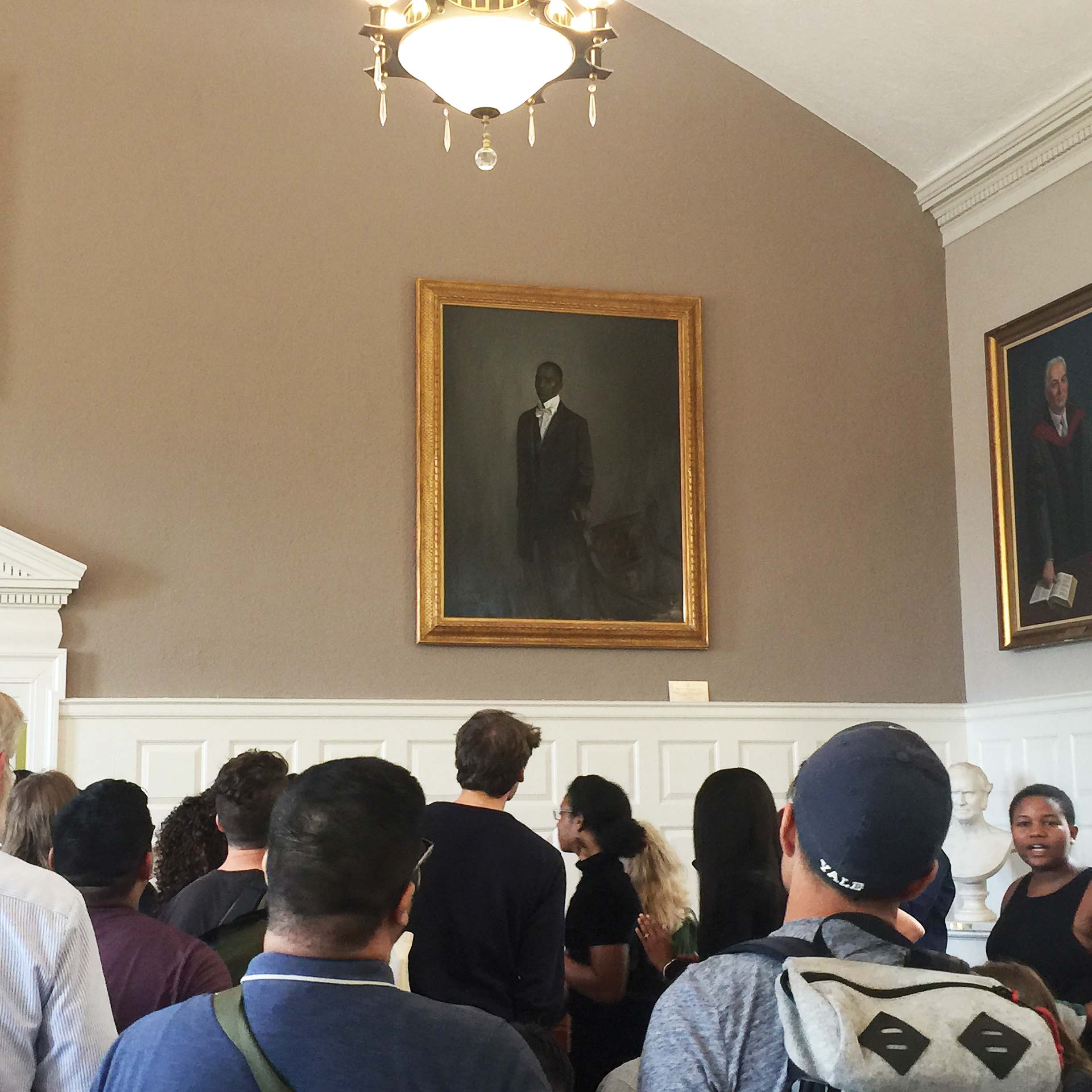
As a student at the Divinity School, James W.C. Pennington was only allowed to sit in class. He could not speak, enroll, nor receive a degree from the University.
But eighteen decades later, a new oil portrait of Pennington — the first African American to ever attend Yale — hangs in the Divinity School’s common room.
The portrait of Pennington, a minister and the author of “The Fugitive Blacksmith,” was unveiled during a ceremony on Wednesday, marking the culmination of a yearslong effort to honor the former student. The ceremony included remarks from Divinity School Dean Greg Sterling and the painting’s artist Jas Knight, as well as two members of a task force chartered to select the artist, Elijah Heyward DIV ’07 and professor Clifton Granby.
“Yale has a history that is more diverse than what is sometimes recognized,” Sterling said in an interview with the News. “This is an attempt to capture some of the diversity in our own past. Not everything about that past is what I wish it were, but we try to tell the story honestly, and we deal with it.”
The Divinity School has already renamed one of its largest classrooms after Pennington and hung two depictions of him throughout the school. The portrait unveiled at Wednesday’s ceremony, painted by Knight, replaced the lithograph reproduction of an older Pennington illustration that previously hung in the common room.
The school has made other recent attempts to diversify the “iconography of the walls,” Sterling said. These efforts have included a conscious effort to display female emeriti faculty as well as the creation of a high-resolution hall of fame for alumni award winners, many of which come from diverse backgrounds.
“Our mission as a committee is to ensure that YDS expresses our values and tells our story on the walls of YDS,” wrote Divinity School Director of Communications Tom Krattenmaker, chair of the school’s Committee on Walls and Art in an email to the News. “Given that diversity and inclusion are important parts of who we are as a community, the committee — like our students, faculty, and staff — was struck by the lack of diversity on the walls. We have made significant progress these past three years or so, as exemplified by this James Pennington portrait (and other advances). And, we still have more to do.”
Knight said he intended to depict Pennington as a “dignified man,” despite the lack of dignity he received throughout his life and during his time at Yale. In an artist’s statement, he said Pennington was not rewarded for his efforts to counter the ignorance of the society in which he lived. Knight added that he was glad he could participate in these current efforts to honor Pennington.
Knight chose to construct the painting’s frame in the style of Stanford White, an architect whose designs reflected the styles of the American Renaissance. Knight explained that White’s bold and ornate style with uniquely mixed motifs was a reflection of American multiculturalism, a key component of Pennington’s narrative.
In his remarks prior to the unveiling, Granby, a Divinity School professor, emphasized the importance of displaying Pennington’s legacy in the common room.
“The question isn’t simply whether Pennington deserves to be so prominently displayed here in the common room,” Granby said. “The real question involves the sort of entitlement that would incline a person to ask that question in the first place.”
During his remarks, Heyward, a Divinity School alumnus who served on the committee to pick the portrait’s artist, said that when he walked into the school’s common room for the first time, he did not recognize himself in any of the all-white portraits he saw. He likened the experience to a child visiting his grandparents and not finding a picture of himself on the walls of their home.
Heyward underscored that the school’s physical walls should represent the school’s diverse community. He added that this would inspire community members to positively engage with the world.
“For me, knowing that James Pennington was who he was — the first African American to attend Yale that went on to do so many amazing things in the world — it means that maybe I can do the same thing,” he said. “Having a portrait honoring that is really special.”
Heyward added that he sees the effort to honor Pennington as “a beginning of a wonderful season,” in which the Divinity School will support students and affirm that they belong.
“The Fugitive Blacksmith” was first published in 1849.
Asha Prihar | asha.prihar@yale.edu







